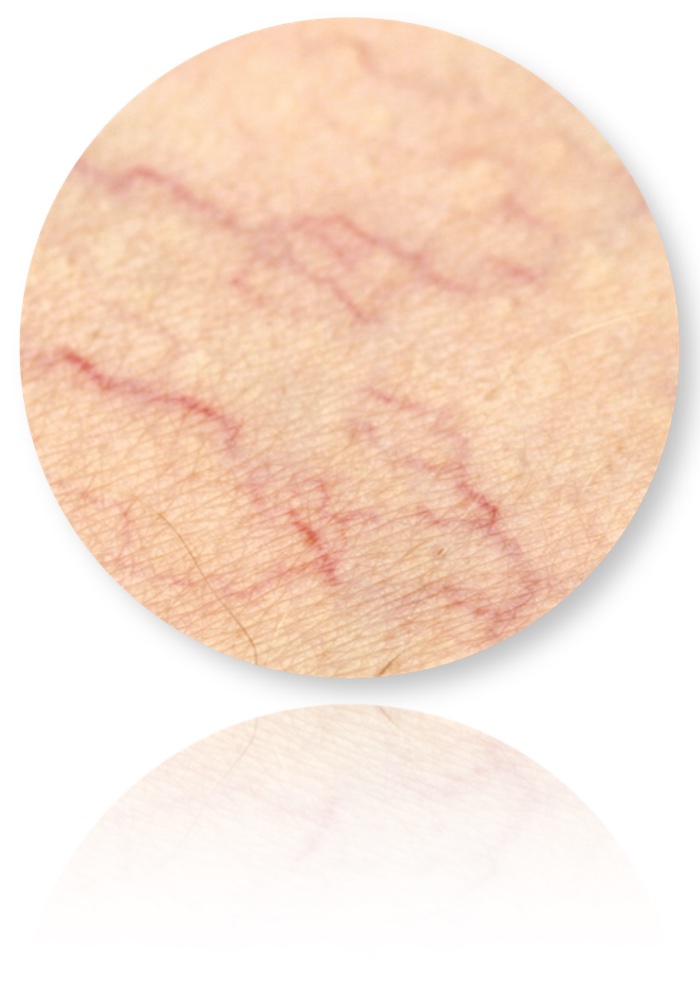Thread, flare or spider veins

Spider, Thread, Flare, and Varicose Vein Treatments
What are Spider, Flare Veins
Flare veins (also known as thread or broken veins) are tiny surface veins that can appear blue, red or pale green. They can be on any part of the body but are most commonly treated on the legs and face. Theyacheand sometimesitch.
We offer treatment with Micro Sclerotherapy.
What are Varicose Veins
Varicose veins are bigger, blue veins that often bulge but can be flat. They also occur on the legs and are often caused by a defect in the veins. If the varicose veins are minor they can be treated with injection sclerotherapy too. This will be discussed during your consultation.
Vein Sclerotherapy
Sclerotherapy involves injecting a small volume of a irritant liquid into affected veins. The liquid acts upon the lining of the vein to cause it to seal shut, eliminating the visibility of the vein. Sclerotherapy can be quickly performed at our clinic and no anaesthesia is required.
What to Expect
When injected, the vein disappears, but then almost immediately becomes red and inflamed. The leg can ache after treatment and this is a consequence of the irritant liquid working. The inflammation settles over a period of days and the vein then becomes scarred and shrinks over weeks. It then takes a number of weeks for the result to be evident, often 6-8 weeks. However, a final result may take many months.
Frequently Asked Questions
Using a very fine needle, I can inject the sclerosant into the veins you wish treated. The sclerosant irritates the vein and causes it to scar and then shrink away. The vein then fades over time.
Any area can be treated, but most commonly the legs and face are affected and therefore treated. If you need treatment to your face we recommend that a local anaesthetic cream is applied prior to sclerotherapy as the face is a sensitive area.
No. Straight after the treatment you can walk out and you will be able to drive yourself home if required. You leg may ache a little due to the irritation. You can take some paracetamol to help, but the majority of patients do not need this either.
Initially, the treated veins will look worse before they look better as the injection causes an irritation to do it's job. The process of scarring and shrinking away takes between 4-6 weeks but can take up to 6 months.
It is better if you don't wear light or white clothing on your legs as sometimes the injection site may bleed a little. Looser clothes are better as you may find that more comfortable afterwards.
There is nothing special you need to do. The sclerosant works by inflaming the vein so I recommend avoiding anti-inflammatory medicines (such as aspirin, ibuprofen) 48 hours before and after treatment.
You will be able to walk out after the treatment and resume normal activities straight away. I recommend not soaking in a hot bath, going to a Spa or direct sun exposure for 1 week after the treatment as this can dilate your veins and may cause the treatment not to work. You can resume exercise 24 hours afterwards and it is safe to fly.
Sclerotherapy for veins is not a new treatment. It has been used since the 1930s for treatment and a number of research papers have shown that it works.
Studies have shown that around 70% of veins treated this way show a marked improvement. It is common to require more than one session for treatment. A maximum dose restricts the total area that can be treated in one sitting. The area that can be treated will be discussed with you prior to any treatment commencing.
After treatment your legs may ache or feel itchy. The site of injection can become red and a little swollen. This should settle within days.
Some patients experience bruising around the injection site or may get small skin sores or ulcers. This is more common if the ankle area is treated.
The skin area over the injection site can become darken or stained with a brownish discolouration. If this occurs it usually fades, but can take up to a year.
Any harmful risks of sclerotherapy are rare. Some people will be allergic to the solution and may get an allergic reactions. Under very rare circumstances DVT and visual disturbances have been reported.